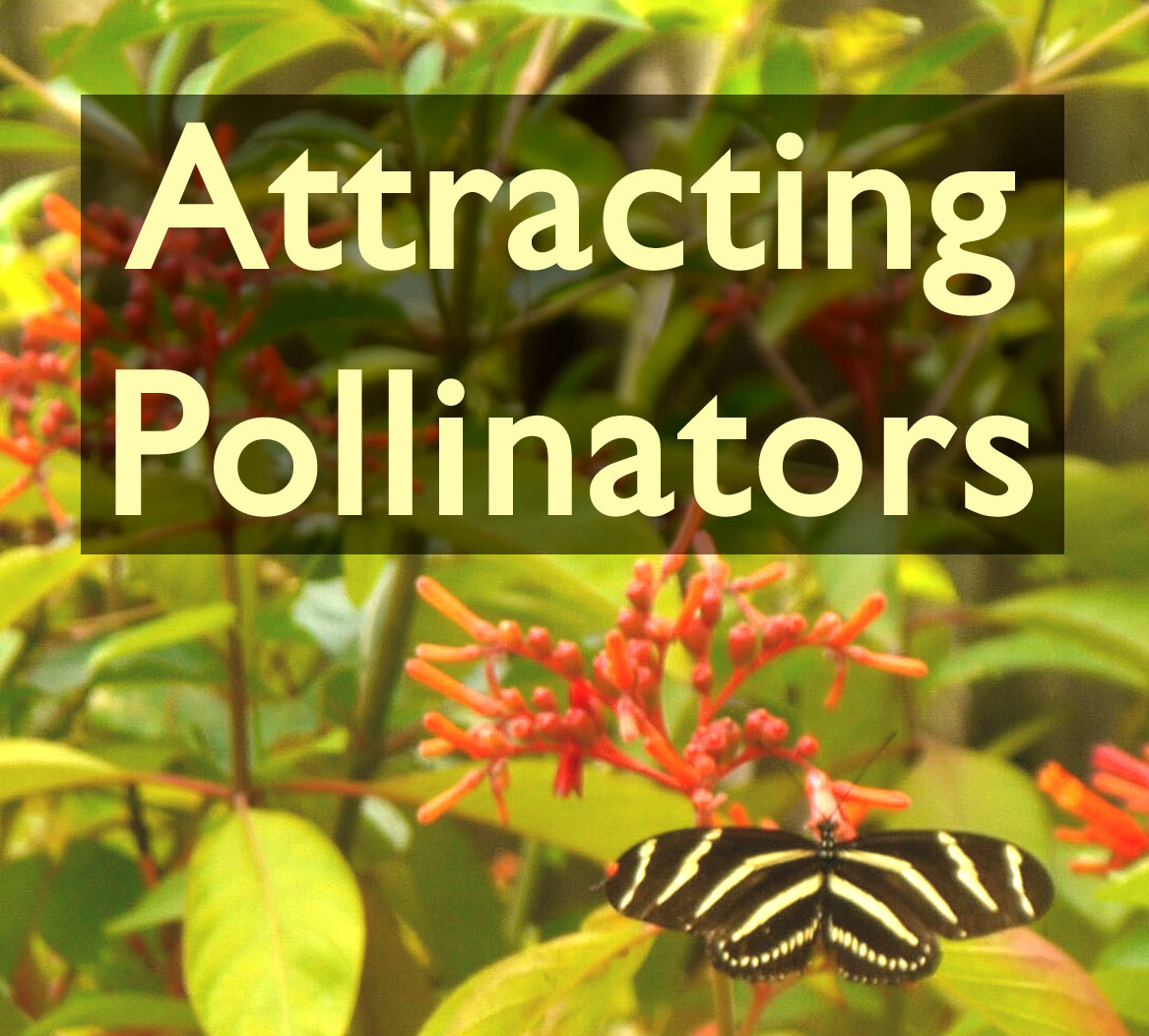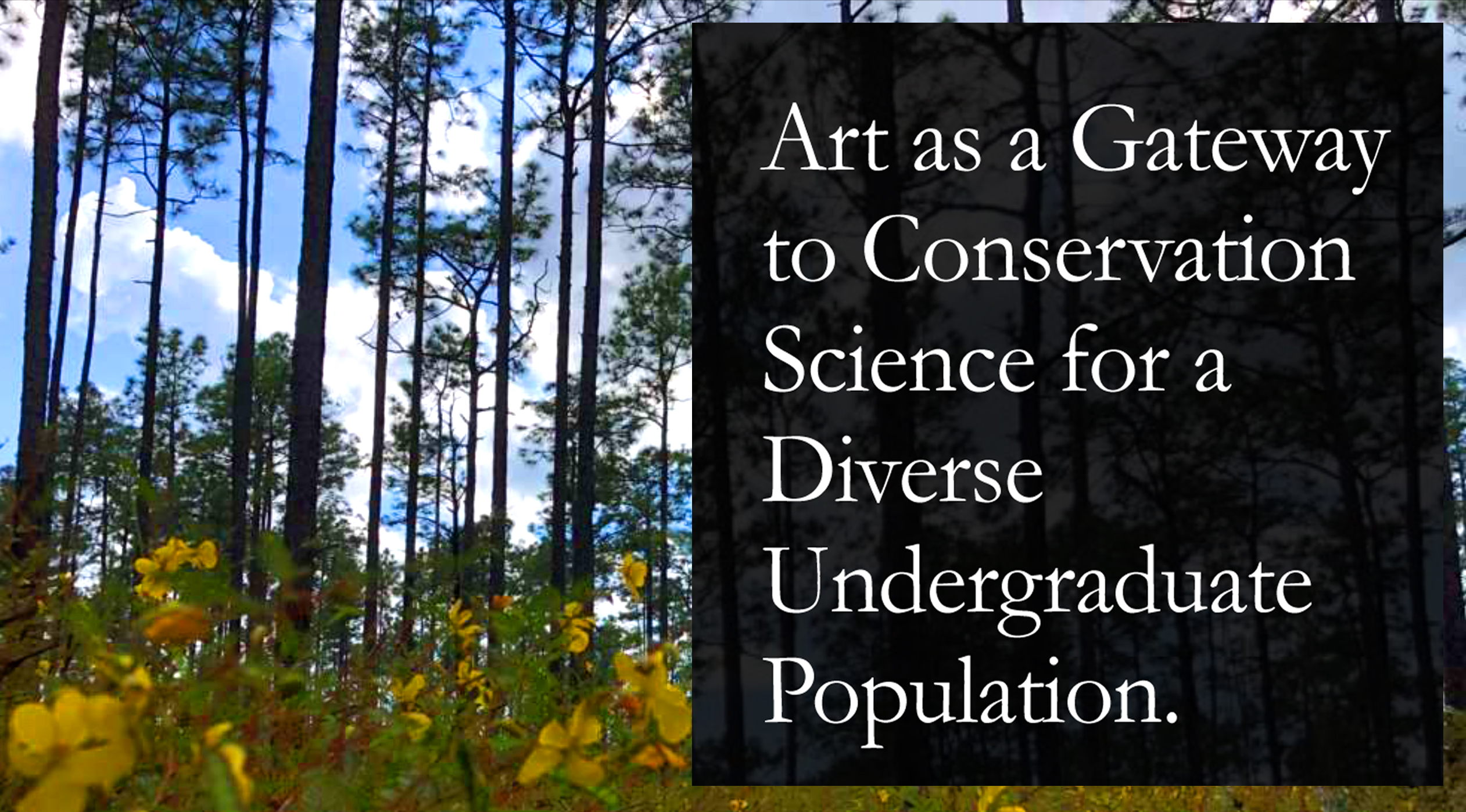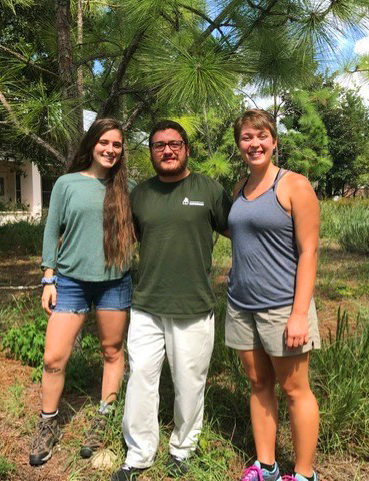Research
The Volusia Sandhill Ecosystem restoration provides a range of opportunities for faculty and undergraduate research.
Class Projects
As a teaching landscape, the sandhill serves as a laboratory for courses in biology, environmental studies, geography and honors.
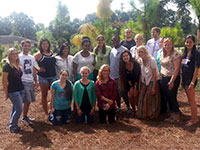
Students in Flora of Florida (BIOL 305) discussed their work on the sandhill at a luncheon with author Janisse Ray, Woodrow Wilson Visiting Fellow.
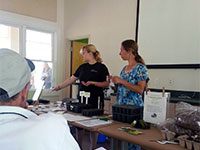
Honors students are developing a seed library, which will include native Florida wildflower seeds as well as heirlooms from the Hatter Harvest Garden.
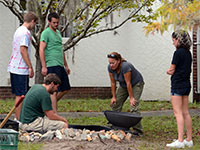
Flora of Florida students created a water feature for use by birds, mammals, amphibians and insects. With the addition of a water feature, bird houses and pollinator garden, they applied for and were granted, certification as a Wildlife Habitat by the National Wildlife Federation.
Baseline Data for the Restoration
As an ongoing restoration and museum without walls, the landscape provides an opportunity for monitoring progress in the growth of individual plant species as well as changes in this small ecosystem.
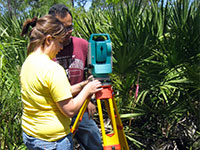
Geographic information systems (GIS) students map the growth of the trees to produce a survey map of the restoration.
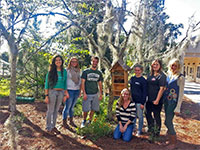
Ben Chase (center) extended his interest in native pollinators by trapping and identifying insects in the sandhill landscape and throughout Stetson University's DeLand Campus.
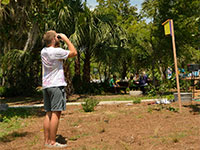
Ethan Royal conducted visual bird surveys on the landscape, in other areas of campus, and at two different intact sandhill sites.
Faculty and Undergraduate Research
The emerging sandhill ecosystem and its native plant screen-house provide an on-campus laboratory for faculty research in a range of disciplines, from plant ecology to sustainability. Faculty work with undergraduates to develop projects for senior research, internships and independent study.
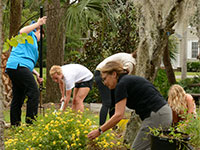
Faculty-directed undergraduate research in the native plant screen-house.
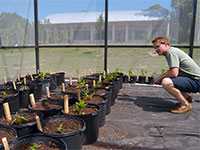
A biology senior studies the effects of soil pH and soil microbes on seedling growth of three perennials in the Asteraceae family in a summer independent study.
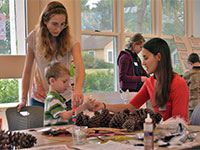
Student interns have worked through the Gillespie Museum to research and develop programming on the longleaf sandhill ecosystem.
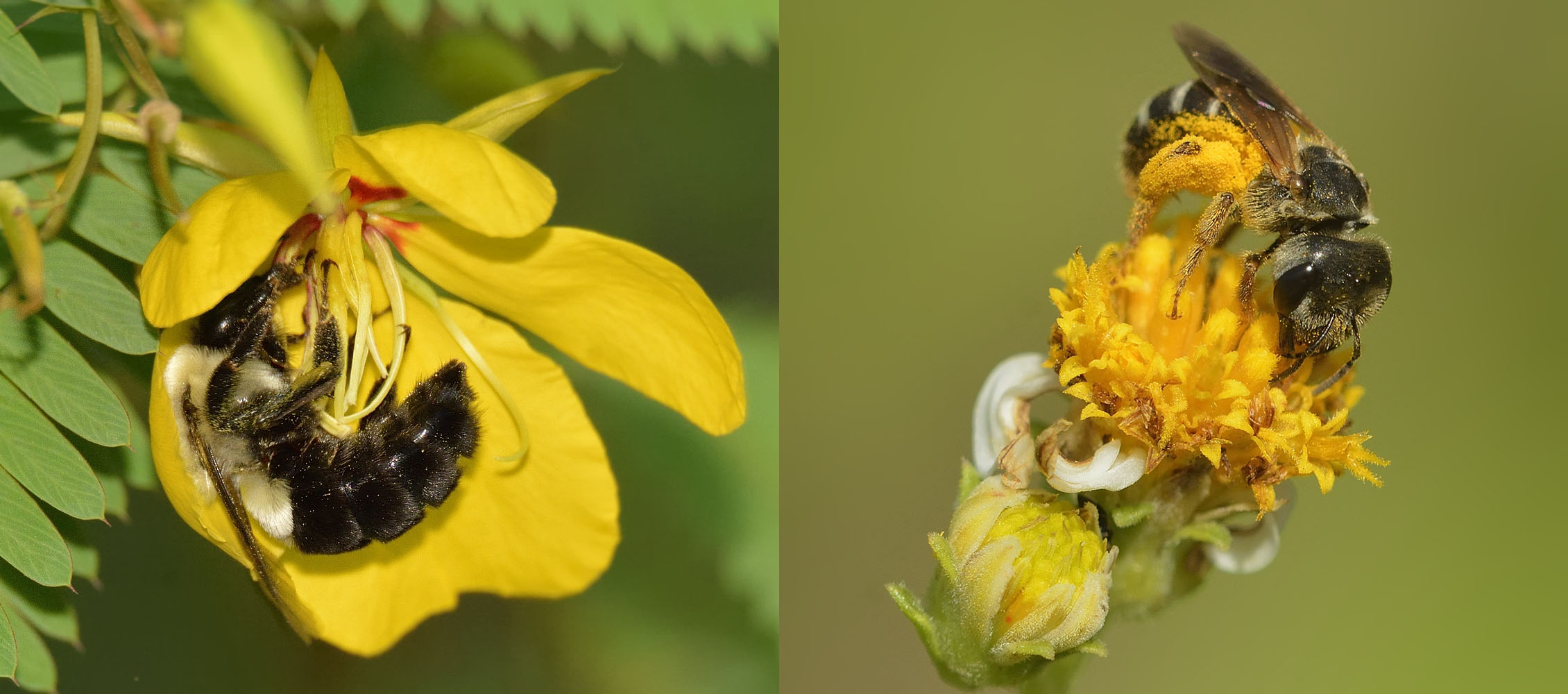
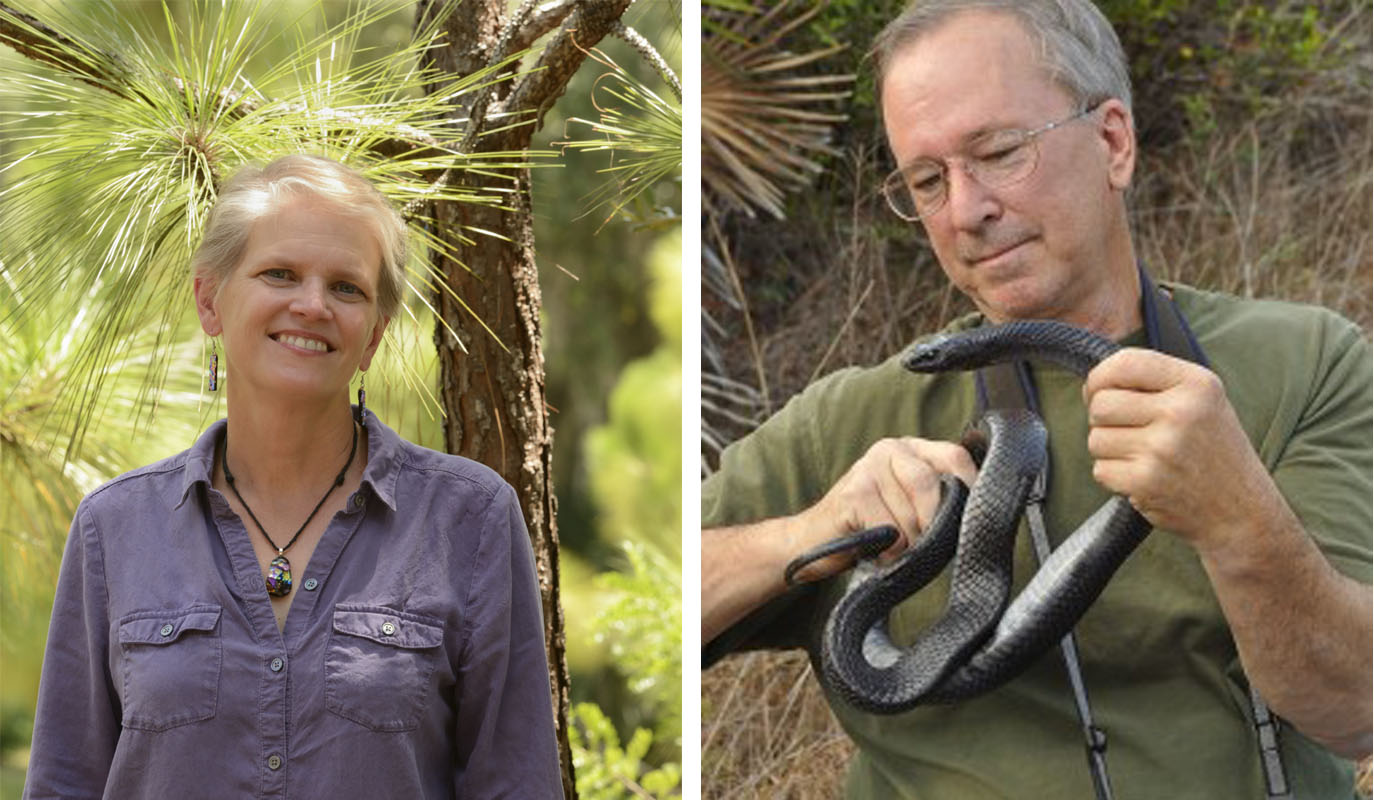
Bumblebee visiting Chamaecrista fasciculata, and halictid bee (sweat bee) visiting Bidens alba; Professors Cindy Bennington and Peter May, Biology, Stetson University.
During the summer months in three years (2016-18), Stetson biology professors Cindy Bennington and Peter May have been assessing the ability of the Volusia Sandhill Ecosystem to support wild insect pollinators. Comparing visitation to flowering plants in two sites—our campus urban restoration and a sandhill site at nearby Heart Island Conservation Area—they found that total insect visitation rates were not different between years or site, suggesting that even a small urban fragment is capable of maintaining abundant pollinators. Their research appears in the April 2020 issue of Natural Areas Journal. Check out the abstract of their article, "Pollinator Communities of Restored Sandhills: a Comparison of Insect Visitation Rates to Generalist and Specialist Flowering Plants in Sandhill Ecosystems of Central Florida."
You can help support pollinators by incorporating native plants into your own yard or garden. Dr. Bennington has created a How-to video on Attracting Pollinators with Native Florida Wildflowers.
2019-2020 Volusia Sandhill Interns - Jenna Palmisano, Justin Pinero and Stephanie Hanson.
A recent student project by three Volusia Sandhill Interns explores the possibilities of Art as a Gateway to Conservation Science for Undergraduates. In this slideshow, prepared for the annual conference of the Association of Southeastern Biologists (March 2020), they present their evolving ideas on ways to engage undergraduates in our longleaf pine restoration, insights which will continue to shape programming for the Volusia Sandhill Ecosystem. From 3D modeling to a digitally printed tapestry, environmental and conservation-focused art projects help undergraduate participants recognize the intricate systems that make up a native landscape, redefining how we interact with nature, to change our patterns.
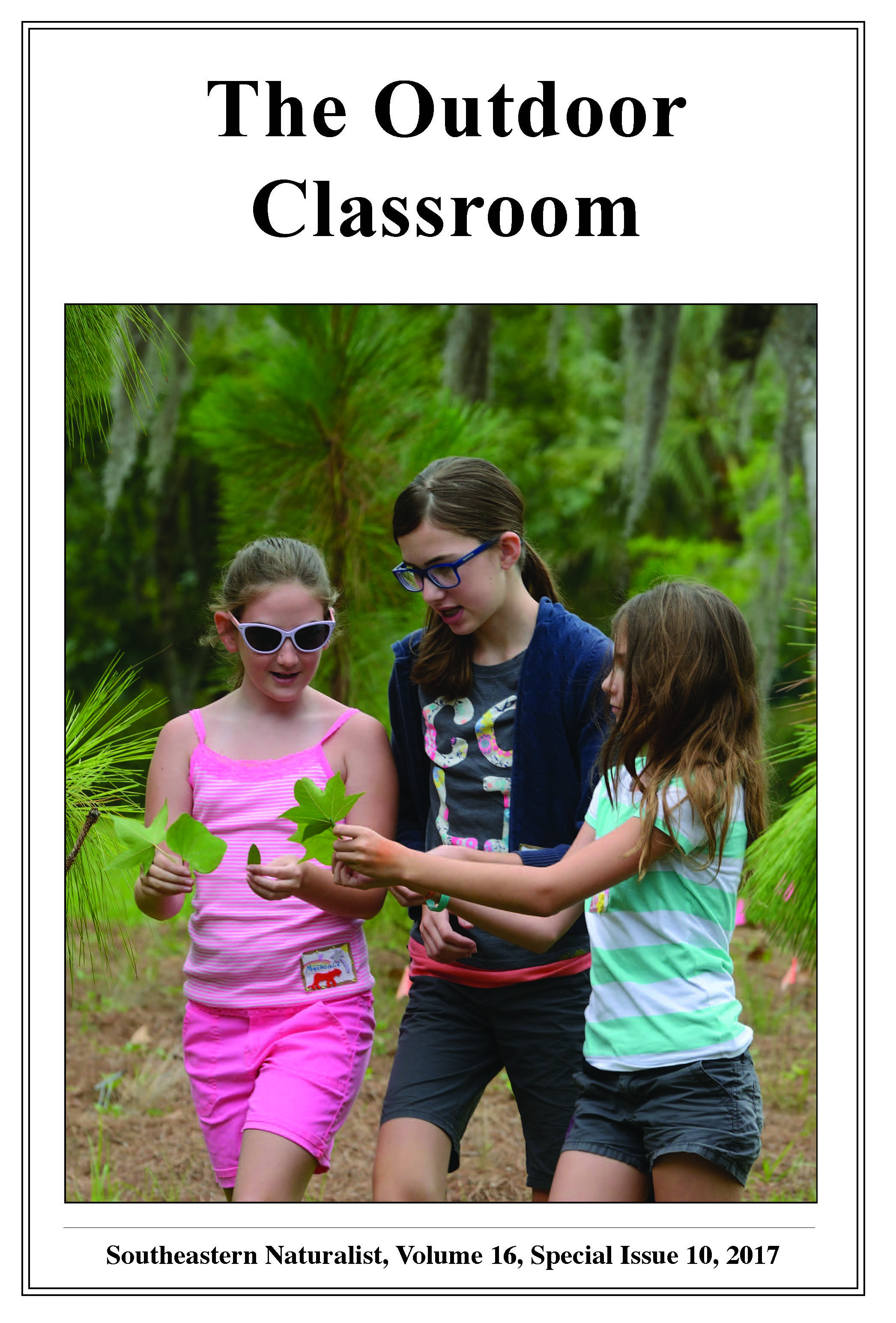
Cover image from Southeastern Naturalist, Volume 16, Special Issue 10, 2017
In “From the Ground Up: Natural History Education in an Urban Campus Restoration,” an article from a special issue of Southeastern Naturalist devoted to the concept and practice of "outdoor classrooms," project directors (and special issue editors) Karen Cole and Cynthia Bennington discuss the first phase of development of the Volusia Sandhill Ecosystem as a case history: with volunteer labor and modest funding, a small but visible corner of a university campus has been developed as a community-based environmental project, a research site for the undergraduate curriculum, and an urban forest with environmental benefits.
